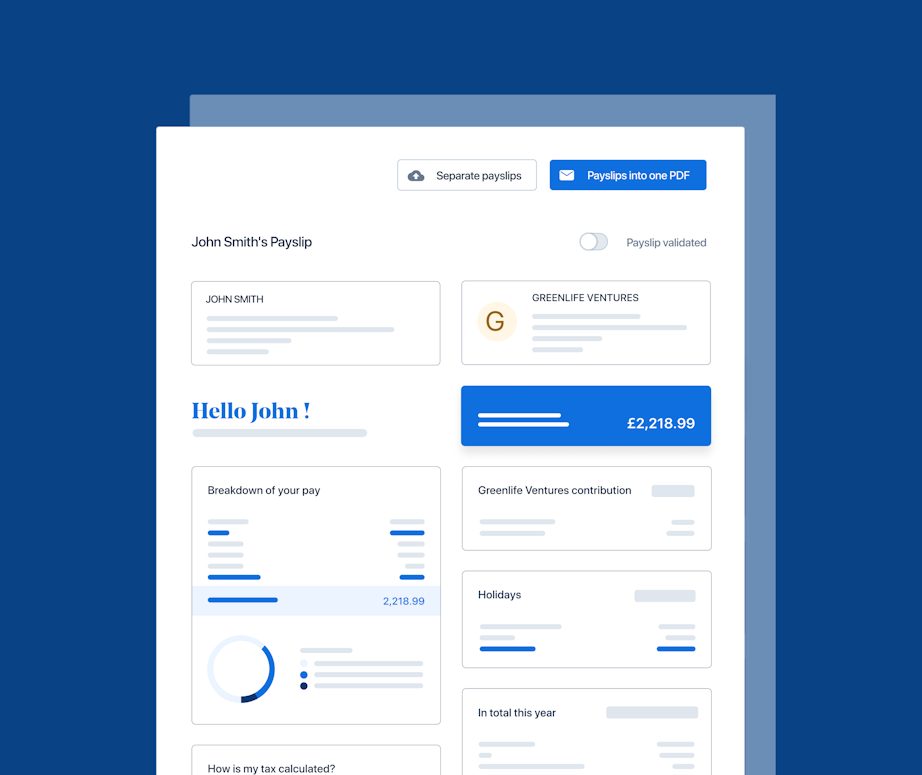What Are The Dates For UK Bank Holidays in 2025?


Before you start fantasising about white sandy beaches or a fun staycation, it's worth knowing what the UK bank holidays actually are in 2025.
Moreover, being mindful of these dates as an employer can help you plan out workforce projects and, of course, assist your employees in making the most of their leave.
So, without rambling on too much, here’s a useful reference point for HR and office managers keen to update their calendars (or plotting a getaway or two).
Let’s review the 2025 UK bank holidays, as well as those coming up in 2026 and 2027 (for those who want to get extra organised).
How many UK bank holidays are there in 2025?
Let’s start with how many bank holidays there are in the UK this year - there are 7 bank holidays in 2025, starting with New Year's Day on the 1st of January as outlined in our table below:
| UK Bank Holidays in 2025 | Day of the week | Date |
|---|---|---|
| New Year’s Day | Wednesday | 1st January |
| Good Friday | Friday | 18th April |
| Easter Monday | Monday | 21st April |
| Early May Bank Holiday | Monday | 5th May |
| Spring Bank Holiday | Monday | 26th May |
| Summer Bank Holiday | Monday | 25th August |
| Christmas Day | Thursday | 25th December |
| Boxing Day | Friday | 26th December |
Legislation bytes 👩⚖️
A campaign was recently launched to get the government to grant the UK public an additional bank holiday in 2025 to commemorate the 75th anniversary of VE Day. However, it has since been announced that these plans won't go ahead.
Unlike other years, there are no 'substitute' bank holidays this year; that is, a weekday that becomes a bank holiday to replace one that falls over a weekend. Howeve,r there are substitute days upcoming in 2026 and 2027.
It's important for employers to pay special attention to these and ensure all stipulations laid out in their employment contracts are followed.
What are the bank holidays for 2026?
If you're looking to plan even further ahead, the government has already laid out their bank holiday plans for 2026 and 2027. Here are the UK bank holidays for 2026:
| UK Bank Holidays in 2026 | Day of the week | Date |
|---|---|---|
| New Year’s Day | Thursday | 1st January |
| Good Friday | Friday | 3rd April |
| Easter Monday | Monday | 6th April |
| Early May Bank Holiday | Monday | 4th May |
| Spring Bank Holiday | Monday | 25th May |
| Summer Bank Holiday | Monday | 31st August |
| Christmas Day | Friday | 25th December |
| Boxing Day (substitute day) | Monday | 28th December |
And how many bank holidays can we expect in 2027?
And for those of us who want to be really ahead of the game, here are the bank holidays for 2027:
| UK Bank Holidays in 2027 | Day of the week | Date |
|---|---|---|
| New Year’s Day | Friday | 1st January |
| Good Friday | Friday | 26th March |
| Easter Monday | Monday | 29th March |
| Early May Bank Holiday | Monday | 3rd May |
| Spring Bank Holiday | Monday | 31st May |
| Summer Bank Holiday | Monday | 30th August |
| Christmas Day (subsitute day) | Monday | 27th December |
| Boxing Day (substitute day) | Tuesday | 28th December |
Does the 28 days holiday entitlement include bank holidays?
In the UK, all full-time employees are entitled to the equivalent of 28 days’ annual leave a year.
Now it’s a common myth that of this standard holiday entitlement, eight days are automatically assigned to bank holidays. The truth is that there is no statutory entitlement to be paid for UK bank holidays; instead, employers have the right to decide when someone takes their annual leave.
Put differently, employees do not have an automatic legal entitlement to paid leave on bank holidays. Any right to time off or extra pay for working on those days is entirely dependent on the terms you lay out in their employment contract.
As a result, many companies choose to remain closed on bank holidays and therefore allocate bank holidays as part of their employees’ annual leave entitlement.
How is UK bank holiday pay calculated?
It's a big topic, which we cover at length on our blog. But to sum things up, calculating holiday pay is done based on the average number of days worked in a week. Holiday pay for part-time workers, or pro rata holiday entitlement, is based on the same principle as entitlement for full-time employees, just adjusted for the amount of the holiday year they’ve worked.
So if you have a worker that works the same amount of hours every week, just part-time, their holiday entitlement would be 5.6 times the days they work in a week, and their bank holiday pay adjusted accordingly.
Zero or irregular-hours employees' bank holiday pay is a different story - you can find out more about this in our post on holiday pay for zero hour contract workers.
What about PayFit?
At PayFit, we aim to simplify the lives of both employers and employees, and bank holidays are no different. PayFit is not only an intuitive and easy-to-use payroll software; it also offers features such as leaves and absences management.
Both admins and employees have access to their own portals. Employees can make their annual leave requests while also having visibility over their team’s calendar. Admins and managers can then approve or refuse annual leave requests. The leave balance is then automatically updated on the employee space which is reflected on the employee's payslip.







